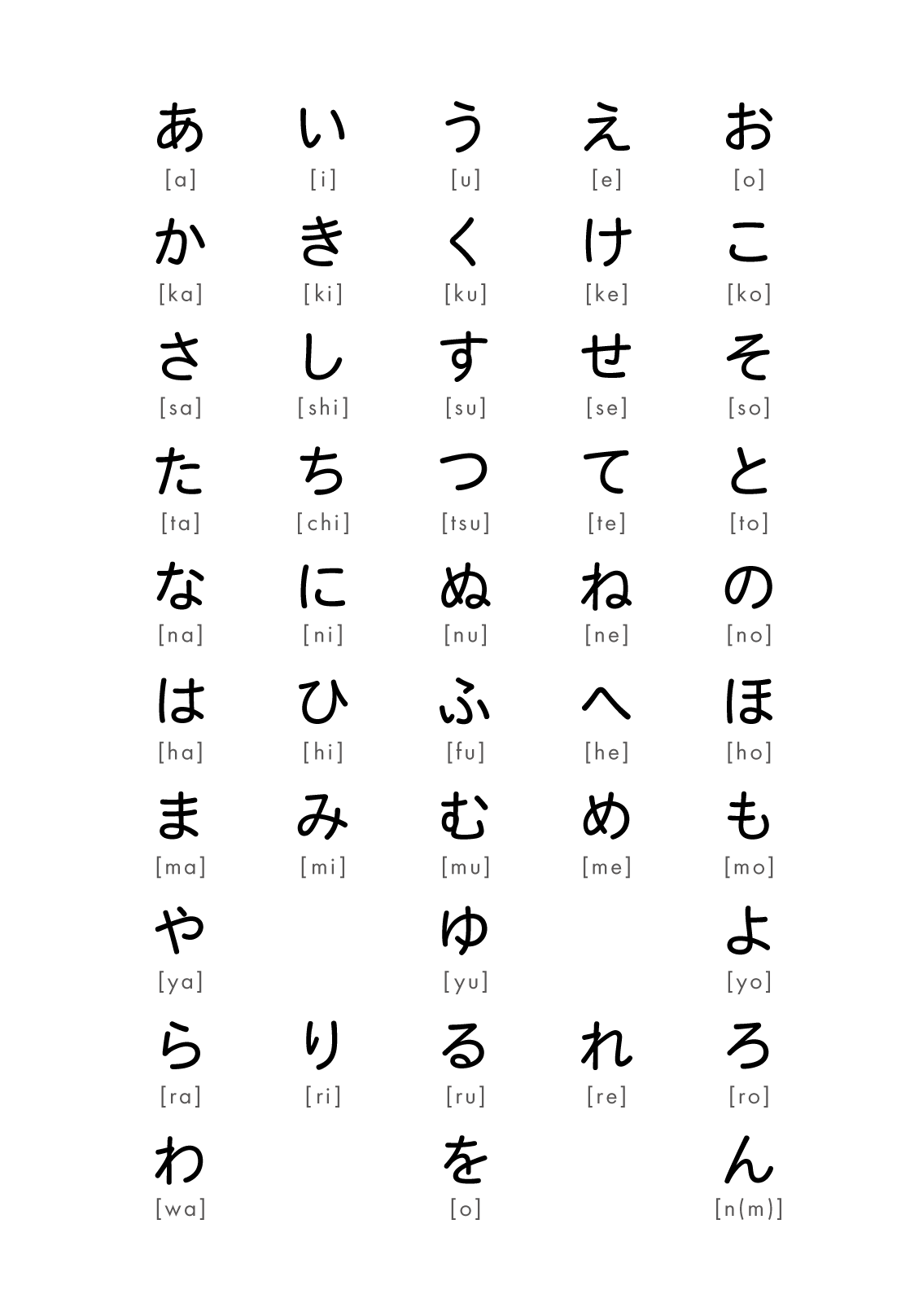
Hiragana is a 46 character phonetic syllabary, meaning each character corresponds to a sound rather than a specific meaning (this will be relevant later when we talk about Kanji). Each symbol of Hiragana represents a syllable sound, hence syllabary. Take the symbol "か" for example, this represents the sound "ka", two letters or an entire syllable in english. The rest of Hiragana also mirrors this form of a consonant plus a vowel, aside from the individual vowels that have a symbol to themselves.

Important to note
Writing both Hiragana, Katakana and Kanji correctly involves writing each stroke of the symbol in a specific order, known literally as stroke order. This is important to learn for anyone planning on being proficient at writing japanese.
Where is Hiragana used?
Hiragana as an alphabet is primarily used grammatically within written Japanese. It is used to form conjugations of verbs and as particles that mirror how words like, for example, "the" work in english, setting context or defining the object to which or with which a verb is being done, these are just a few usage cases of how Hiragana is used grammatically within a Japanese sentence, in a sense Hiragana forms the skeleton of the sentence within which all of the details and content are added. Hiragana is additionally used for some japanese words that don't have Kanji counterparts or whose Kanji counterparts for whatever reason, whether too obscure or too formal, are rarely used. This solidifies Japanese's first alphabet as the one you'd want to begin with in learning japanese. Once you know Hiragana, you begin to understand the structure of the language that fits into this Hiragana skeleton so to speak.
Origins of Hiragana
Hiragana originally was a derivative of Chinese "man'yōgana" characters, used for their pronunciation (a practice dating back to the 5th century), often described to have been brought into widespread use in the second half of the 9th century during the Heian period. The Japanese writing system as a whole has close ties to the chinese writing system, while its current form is very different, and inherited symbols at many points through Japan's history due to the strong cultural influence China had on Japan that varied between eras as the most influential power within reasonable reach. Before it saw common use much later on, Hiragana began use primarily by women of the court, since men who had access to higher levels of education preferred to use only Kanji script. Often considered to be worlds first novel, the Tale of Genji, was written in Hiragana by one such woman called Murasaki Shikibu.